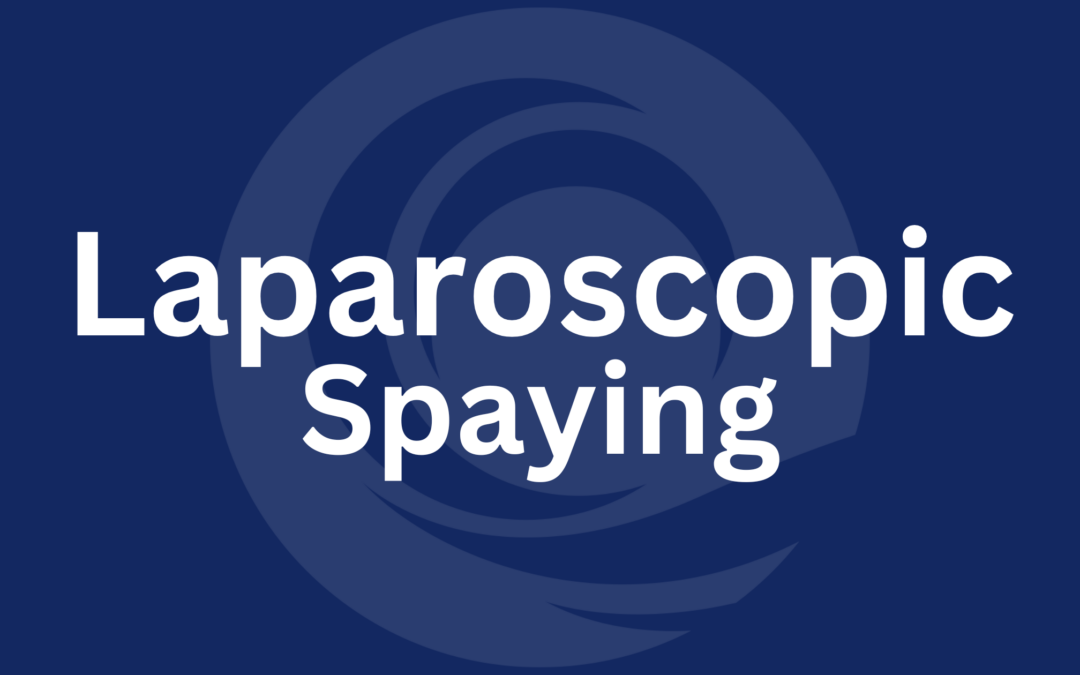What is a Laparoscopic Spay?
A laparoscopic spay (also called a keyhole spay) is a minimally invasive technique for neutering female dogs and cats. Unlike traditional spaying, which requires a larger abdominal incision, laparoscopic spays use a tiny camera and specialised instruments to remove the ovaries through small keyhole incisions.
This technique is faster, less painful, and provides a quicker recovery, making it the preferred choice for many pet owners and veterinarians.
A Brief History of Laparoscopic Spays in Veterinary Medicine
🔬 Early Spaying Techniques (Pre-1900s):
Before surgical sterilization became common, spaying was rare and risky. The first documented ovariectomy (removal of ovaries) in dogs was performed in the 19th century, but the procedure was not widely used.
⚕️ Traditional Spay Surgery (20th Century–Present):
For decades, the standard spay (ovariohysterectomy) involved a large abdominal incision to remove both the ovaries and the uterus. While effective, it resulted in longer recovery times and more post-operative pain.
📈 Introduction of Laparoscopic Spays (2000s):
With advancements in human minimally invasive surgery, veterinarians began using laparoscopic techniques for safer, less traumatic spays. Today, laparoscopic spaying is gaining popularity worldwide, particularly in larger breed dogs, athletic dogs, and working dogs due to faster recovery and reduced post-op complications.
How is a Laparoscopic Spay Performed?
The procedure is performed under general anaesthesia and typically takes 20–40 minutes. The key steps include:
1️⃣ Small Keyhole Incisions: Two or three tiny incisions (5-10mm) are made in the abdomen.
2️⃣ Insertion of the Laparoscope: A high-definition camera is inserted to provide a magnified view of the ovaries.
3️⃣ Ovary Removal (Ovariectomy): Specialised laparoscopic instruments are used to carefully seal and remove the ovaries. Unlike traditional spays, the uterus is left in place (unless there is a medical reason to remove it).
4️⃣ Closure & Recovery: The small incisions are sutured or closed with surgical glue, and the pet recovers quickly.
⏳ Most pets go home the same day and return to normal activity much faster than with a traditional spay.
Benefits of Laparoscopic Spays Over Traditional Surgery
✔️ Minimally Invasive: Tiny incisions mean less trauma and faster healing.
✔️ Less Post-Operative Pain: Studies show that laparoscopic spays reduce pain by up to 65% compared to traditional surgery.
✔️ Faster Recovery Time: Most pets return to normal activities in a few days, compared to 10–14 days with a traditional spay.
✔️ Lower Risk of Complications: Smaller incisions mean less chance of infection, swelling, or wound breakdown.
✔️ Ideal for Active & Working Dogs: Athletes, agility dogs, and service dogs recover quickly without long downtime.
When is a Traditional (Open) Spay Still Needed?
While laparoscopic spaying is an excellent option, open surgery may still be necessary if:
⚠️ The pet has a diseased uterus (e.g., pyometra, tumours) requiring removal.
⚠️ The clinic does not have access to laparoscopic equipment.
⚠️ The procedure needs to be performed at a lower cost, as laparoscopic equipment requires experienced training.
Alternatives to a Laparoscopic Spay
📌 Traditional Spay (Ovariohysterectomy): Still widely used, but involves larger incisions and longer recovery.
📌 Chemical Sterilization: Hormonal implants exist but are not widely used due to potential side effects.
📌 Ovary-Sparing Spay (OSS): A procedure that removes the uterus but leaves the ovaries to maintain hormone levels.
Laparoscopic spaying is considered the best balance between safety, effectiveness, and minimal recovery time.
What to Expect After a Laparoscopic Spay
🏡 Same-Day Discharge: Most pets go home within a few hours of surgery.
🍗 Quick Return to Eating & Drinking: Pets usually eat and drink the same evening.
🐾 Minimal Activity Restrictions: A few days of rest is recommended, but pets can often return to normal activities in 3–5 days.
🩹 Small, Well-Healed Incisions: Only two or three tiny incisions, reducing post-op care.
With traditional spays, pets often need 14 days of strict rest—with laparoscopic spays, they bounce back much faster!
Final Thoughts
Laparoscopic spays are a game-changer in veterinary medicine, providing a safer, less painful, and quicker alternative to traditional neutering. If you’re considering spaying your pet, ask your veterinarian if a laparoscopic procedure is available.
With faster healing, lower risks, and superior comfort, laparoscopic spays are becoming the preferred choice for responsible pet owners worldwide.

